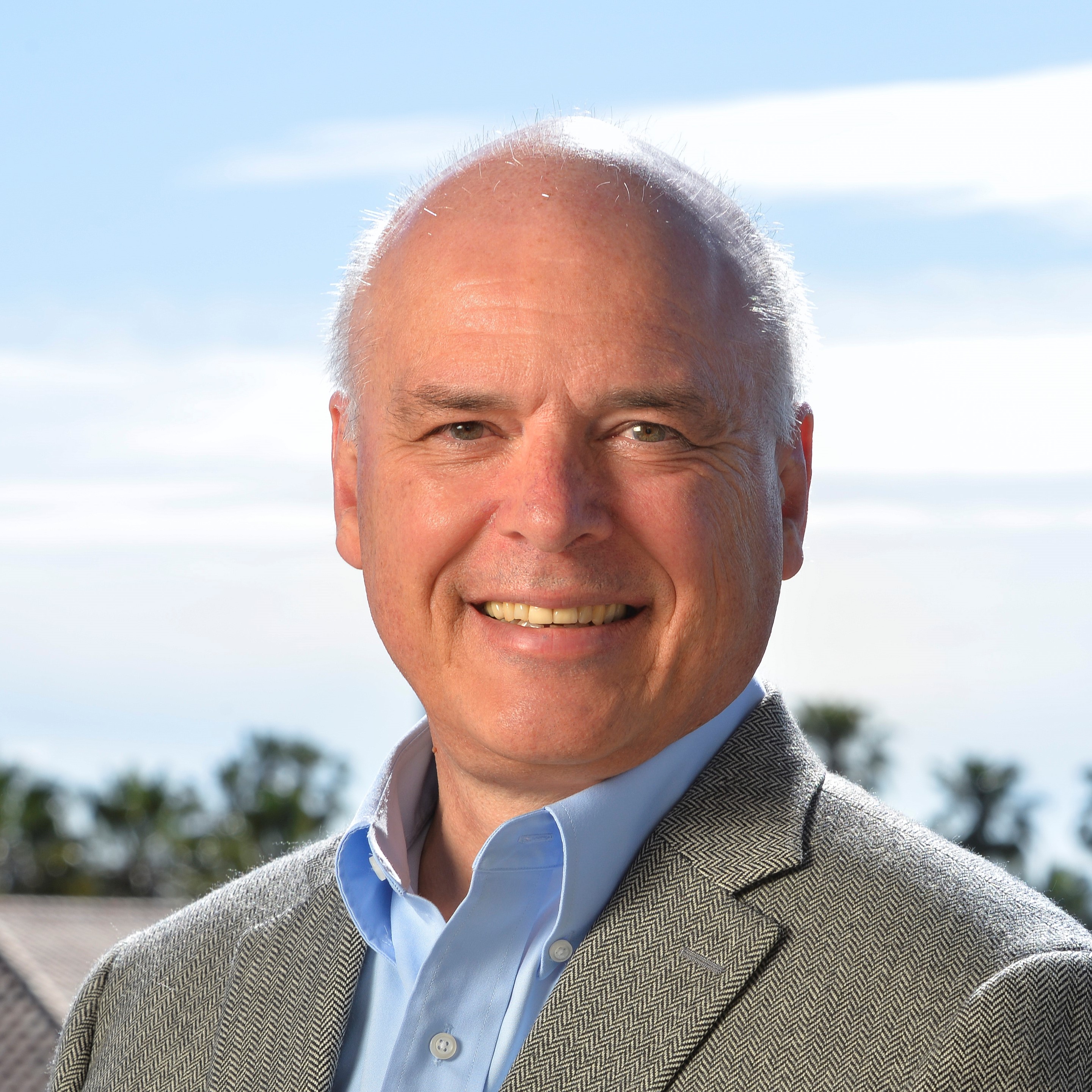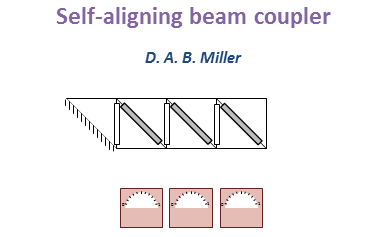 |
Generating and analyzing complex and self-configuring optics |
|
|
For summaries, see a Science perspective on this larger topic, and discussions in the Optics in 2013 Special Issue and in the Optics in 2017 Special Issue of Optics and Photonics News. Also, see the slides from a talk at the Frontiers in Optics meeting, 2017 . We can think of many different optical components we might like to make but that we have not known how to design. A good example is a mode-splitter that could separate multiple overlapping beams without loss. Up till now, we have had to use techiques such as "blind" design by optimization or exhaustive search, and it has not generally been obvious whether the device we wanted was even possible physically. Now, we have shown that (i) we can write down any linear optical component mathematically in a straightforward and useful way - any linear optical device can be written completely as a mode converter that converts one by one from a set of orthogonal input modes to a corresponding set of output modes, and we have also found that there is another and surprising fundamental meaning to these "input" and "output" "mode-converter" sets - they are, respectively, the beams that maximize the absorptivity and the emissivity of an optical device or object. (ii) as a result, we can understand and quantify how complicated an optical component has to be (iii) there is a simple progressive way of designing any linear optical component, with no global optimization calculations (iv) we can actually avoid performing any design calculations at all and make the device adaptive to drifts in components or changes in the inputs - a self-aligning or self-configuring optical device. This self-configuring approach has now been demonstrated in an experiment that automatically unscrambles 4 mixed light beams. We have also analyzed the possible speed with which such networks could configure themselves, concluding that even with powers on the scale of 10 microwatts, networks could configure themselves in this way in microseconds. (v) we can generalize this concept of arbitrary self-configuring linear optical devices beyond spatial modes to include polarization and even, in principle, devices involving different frequencies or pulses. (vi) we can show how to establish the optimum orthogonal channels automatically through any fixed scattering medium (vii) we can use the concept to make spatial reconfigurable add-drop multiplexers (SRADMs) (viii) we can use imperfect Mach-Zehnder interferometers to make perfect overall devices - beamsplitter split ratios in the Mach-Zehnders can be as bad as 85:15 instead of the ideal 50:50. Hence we can imagine mass-fabricated field-programmable linear arrays (FPLAs) that can be corrected and trained in the field. This technique has now been demonstrated experimentally. (ix) A related algorithm allows the progressive configuration of arbitrary Mach-Zehnder mesh networks in which the light flows in one direction, hence extending these ideas to architectures beyond those that support self-configuration. This work has been extended to parallelize the configuration of such networks and introduce general concepts of topology for these networks. (x) By showing one constructive way of designing any linear optical component, this approach proves that any linear optical devices is possible in principle. Spatial and polarization devices could be made using approaches like silicon photonics, including the ability to make the device completely self-aligning or self-configuring. (xi) Quite generally, we can think of optical communications and linear optical devices as connecting from some input or source space to some output or receiving space. A particularly useful way of examining such systems is to perform the "singular-value decomposition" of hte corresponding linear operator or mapping between these spaces. That gives an orthogonal set of source or input functions that map, one by one, to a corresponding orthogonal set of receiving or output functions. In communications, these give us the "communications modes", and for devices these give us the "mode-converter basis sets". This approach allows us to count all of the communications channels quite rigorously, with the important result that the nubmer of such channels of any useful strength is always finite. In devices, it allows us to find the best sets of functions to describe the device; furthermore, these have fundamental meaning, allowing new radiation laws, a new version of Einstein's A and B coefficient argument that applies mode by mode, and a new quantization of the electromagnetic field that can be applied to any volume. This general work is presented here, with an associated mathematical tutorial here. (xii) These kinds of self-configuring networks can also be used to analyze a multimode field automatically, including the full amplitude and phase. Remarkably, they do this without a simultaneous phase reference beam or other algorithms to remove phase ambiguities, which may be a first in optics. Run backwards, such a system can also controlably generate an arbitrary multimode field. This work has been highlighted in a Science perspective and in the Optics in 2013 Special Issue and in the Optics in 2017 Special Issue of Optics and Photonics News and is covered by the papers below, all openly available on-line. "All linear optical devices are mode converters," Opt. Express 20, 23985-23993 (2012) "Perfect optics with imperfect components," Optica 2, 747-750 (2015). C. M. Wilkes, X. Qiang, J. Wang, R. Santagati, S. Paesani, X. Zhou, D. A. B. Miller, G. D. Marshall, M. G. Thompson, and J. L. O’Brien, "60 dB high-extinction auto-configured Mach–Zehnder interferometer," Opt. Lett. 41, 5318-5321 (2016) http://dx.doi.org/10.1364/OL.41.005318 D. A. B. Miller, Linxiao Zhu, and Shanhui Fan, "Universal modal radiation laws for all thermal emitters," PNAS 114, no. 17, 4336-4341 (2017) doi:10.1073/pnas.1701606114 "Setting up meshes of interferometers – reversed local light interference method," Opt. Express 25, 29233-29248 (2017) https://doi.org/10.1364/OE.25.029233 A. Annoni, E. Guglielmi, M. Carminati, G. Ferrari, M. Sampietro, D. A. B. Miller, A. Melloni, and F. Morichetti, "Unscrambling light – automatically undoing strong mixing between modes," Light Science & Applications 6, e17110 (2017) doi: 10.1038/lsa.2017.110 "Waves, modes, communications and optics," Adv. Opt. Photon. 11, 679-825 (2019) DOI: 10.1364/AOP.11.000679
Related work This work builds on some earlier work that showed how to deduce the orthogonal communications channels (the "communications modes") for waves between volumes by use the singular value decomposition of the coupling between sources and receivers, for a simple scalar wave case "Communicating with Waves Between Volumes – Evaluating Orthogonal Spatial Channels and Limits on Coupling Strengths," Appl. Opt. 39, 1681–1699 (2000). and (with R. Piestun) for full electromagnetic waves. “Electromagnetic Degrees of Freedom of an Optical System,” J. Opt. Soc. Am. A 17, 892–902 (2000). This same approach of counting communications channels also allowed the evaluation of basic limits to linear optical components "Fundamental limit for optical components," J. Opt. Soc. Am. B 24, A1-A18 (2007) with specific "upper bound" results for slow light devices "Fundamental Limit to Linear One-Dimensional Slow Light Structures," Phys. Rev. Lett. 99, 203903 (2007) This approach of finding the best communication channels by singular value decomposition of the coupling operator also allows us to clarify various issues and potential misconceptions in the use of specific types of beams, such as optical (or "orbital") angular momentum beams, in communications, as shown in "Better choices than optical angular momentum multiplexing for communications," PNAS 114, no. 46, E9755–E9756 (2017) doi: 10.1073/pnas.1712762114 Generally, such beams do not offer more or necessarily better channels than other possible approaches, and in any given specific situation, the best choice of beams can be deduced straightforwardly by this mathematical singular value decomposition approach. The self-configuring systems even allow these best channels to be established automatically, without calculations. This topic of the correct wave modes for discussing communications and scattering generally is discussed in depth in the tutorial article "Waves, modes, communications and optics," Adv. Opt. Photon. 11, 679-825 (2019) DOI: 10.1364/AOP.11.000679 |
|
